Our tent test was for lightweight models capable of being carried on a backpacking or multi-day trekking trip.
This usually involves some kind of compromise between weight and bulk, and comfort at the campsite. Although all the tents are described as two-person, some of them will be very cosy indeed if being shared by two campers with backpacking gear.
Many of the tents in the test weigh in close to the 2kg mark, which is bearable for a backpacking tent. If there are two sharing, it’s possible to split the tent parts between you to lessen the burden, but we also tested all the tents solo to make sure they fitted our rucksack and weren’t unbearably heavy.
The tents range from value entry-level models to expensive high-tech ultralight ones. Although we give them all ratings, it’s important to decide which features are important to your needs.
We’ve given each tent an overall score for its performance; we’ve also scored it on weight, stability in wind, how much usable space it provides, including in the porch, how easy it was to pitch and strike, its manufacturing and materials quality and value for money.
The nature of the environment in which they were tested, on Lake District mountains over a period of some weeks, meant not all models were pitched in the same conditions. Where the weather was either particularly severe or benign, we’ve noted this.
It’s not always possible to provide direct comparisons of inner tent space due to the irregular shape of many of the models.
Jack Wolfskin Exolight II
Price: £500
Weight: 2,108g
Colour: blue
Packed size: 50cm x 16cm diameter
Material: polyamide
Poles: aluminium
Inner tent space: 215cm x 100cm/120cm
Country of manufacture: China
The Exolight II tips the scales at just over 2kg and the pack is medium size.
It’s a dome tent with an unusual pole arrangement, which comes as one assembly with two hubs. The tent pitches all-in-one. At one end, two poles run from the hub to each corner of the tent. A ridge pole also connects to this, leading at the other end to a second hub into which two shorter poles slot, forming a forked arrangement to the other corners of the tent.
The external pole frame then supports the tent, which attaches to the poles with a series of plastic clips. Two of the short pole sections support the small porch canopies on each side of the fly by plastic grommets. The pole ends are colour coded to enable easy identification of the correct grommets into which to slot them.
Once the four corners are pegged down, the tent is up. For windy conditions, there are five guylines, though on our wild camp wind conditions were quite benign, so we didn’t use them.
The Jack Wolfskin tent is designed to be stable in wind and is best pitched with the lower forked pole facing into the prevailing direction of flow. The brand’s wind-tunnel video of the Exolight II shows it deforming substantially in severe winds, but the poles spring back unbroken.
The inner is a good size and its floor is an almost regular rectangular shape which accommodates two people in reasonable space. The inner has large section of mesh in its sides and ends for ventilation, which is good when using in warmer weather and we encountered no problems with condensation inside even though the fly was covered in a heavy dew by the morning. The pay-off is that the tent isn’t quite as warm when the temperature drops, though on a cool night it was still OK.
There are doors on each flank of the Exolight II, with flaps that can be rolled back if desired in fine weather. Having a door each side certainly makes life easier when two people are using the tent, as there’s no need to crawl over your companion to exit or reach items in the porches. The porches are a reasonable size and accommodated backpacking rucksacks.
Headroom at the apex of the tent is good and some height is maintained even towards the ends due to its steeply raked shape. There’s a detachable mesh storage pouch in the roof of the tent, along with a plastic hanging loop. The Jack Wolfskin tent also has two small mesh pockets at its foot end.
The nylon fly is silicone coated, with taped seems and has a waterproof rating of 1,500mm. The bathtub-style groundsheet is also coated on both sides and has hydrostatic head rating of 5,000mm.
Out on the fells, we found the Exolight II easy to pitch, with just six pegs needed if not guying out the fly. It was stable though we didn’t encounter strong winds while on test. The tent’s plastic hooks are easy to fix on to the poles. The cord running the length of the tent down each side from its corners also helped maintain its integrity.
The Jack Wolfskin tent comes with a comprehensive repair kit including fabric, seam sealant and pole splint tube.
There are nice little design features and quality was good. Weight was good too and, if there are two people using it, one can carry the pole and pegs and the other the inner and fly. The pack size isn’t the smallest, but it is certainly capable of being used while backpacking and trekking.
Performance 16/20
Weight 15/20
Stability 16/20
Room 8/10
Ease of pitching/striking 8/10
Quality 8/10
Value for money 7/10
Total score: 78/100
Mountain Hardwear Aspect 2
Price: £485
Weight: 1,480g
Colour: grey/blue
Packed size: 47cm x 15cm diameter
Material: nylon
Poles: aluminium
Inner tent space: 2.7 sq metres
Country of manufacture: Vietnam
This dome tent from Mountain Hardwear is the second lightest in the test and its pack size is a little smaller than most.
Pitching is inner first: the tent is laid on the floor and pegged at the corners. The crossed poles come as one unit with a hub at the apex. The pole-ends slot into grommets on the tent corners.
The inner is then suspended from the pole array. Unusually, the plastic hooks for hanging are attached to the poles rather than the tent, which has short elasticated loops for suspending from the poles.
A short, floating pole across the tent’s apex is used to secure the mid-section of the inner.
The fly is then draped over the inner and secured at each corner by passing a short shockcord loop through a pair of notches on the metal housings. These are then adjusted for tension using short cords before the porches on each side of the tent are pegged out.
The two porches and doors make it easier when two people are using the tent. Space inside is good, the Aspect 2 having a good width and length in a rectangular layout. Headroom is very good in the centre of the tent and its steeply angles sides mean the a good amount of headroom is maintained even towards its ends.
The two porches are a reasonable size and accommodated our backpacking rucksacks.
The inner tent is about three-quarters mesh, with just the lower sections made from solid fabric. This prevented condensation and, on our wild camp night, was warm enough, though on cooler nights the Mountain Hardwear tent won’t be as cosy.
The system for holding back the open inner tent doors uses a short length of shockcord to stuff the flap into. This is quick and largely worked well as long as enough fabric was pushed into the cord. The flysheet door is held back by a more conventional fabric loop.
Inside the Aspect 2 there’s a small mesh triangular pocket on each end of the inner, plus a small triangular gear loft in its roof. It also has two pairs of small hanging loops. The fly’s door has double zips to provide extra ventilation if needed.
A small cowl helps keep drips out when the porch is open.
The fly is nylon ripstop material with a waterproof rating of 1,200mm hydrostatic head. Oddly, the Mountain Hardwear tent comes with a tube of seam sealant and a little brush, which the brand advises using to treat the tent’s seams before heading into the great outdoors. We didn’t and, despite this, the Aspect 2 resisted patchy rain on our wild camp.
The bathtub groundsheet is rated to 1,500mm head for water resistance.
The tent also comes with a pair of guylines for windier conditions, along with a pole-repair splint tube.
The mesh inner allows for pitching on its own should you find yourself in warm, dry conditions that give you an opportunity for stargazing from your sleeping bag. We didn’t.
Out on the hill, we found the Mountain Hardwear tent very easy to pitch and the spacious interior was capable of accommodating two people in relative comfort.
When the wind picked up, the dome design did allow for significant deformation of the tent, though the poles and fabric did spring back into position when the breeze dropped.
Quality was good and the Aspect 2 had some nice design features. Its mesh inner and dome set-up make it most suited to less cool conditions. The light weight was much appreciated when backpacking.
Performance 16/20
Weight 16/20
Stability 14/20
Room 9/10
Ease of pitching/striking 8/10
Quality 8/10
Value for money 7/10
Total score: 78/100
MSR Zoic 2
Price: £371
Weight: 2,146g
Colour: grey/red
Packed size: 53cm x 17cm diameter
Material: nylon
Poles: aluminium
Inner tent space: 2.23m x 1.37m (3.06 sq metres)
Country of manufacture: Vietnam
The Zoic range is new from MSR for this year, and the two-person version tested is pitched in the middle of the brand’s price range.
Its lightweight dome construction puts its overall weight just above 2kg. Pack size is middling for the tents in the test.
It’s very easy to pitch. You lay the inner tent out and peg down the corners, then place the cross-shape pole assembly, which has a central hub, over the tent. Insert the pole ends into the grommet at each corner, then hang the inner from the poles with the attached plastic clips.
A short, floating pole is then laid across the hub and fixed into a grommet on each side of the roof of the inner.
Once this is done, the flysheet is draped over the tent and the four corner grommets are attached to the bottom of the poles. The fly also has grommets that slot on to the floating pole ends.
There are also hook-and-loop tabs to secure the fly to the poles. The porches on either side are then pegged out and the whole tent is tightened up at the grommets using webbing adjusters.
There are four guylines but if you want to peg out all of them you’ll have to provide two extra stakes in addition to those provided.
The inner is roomy and the Zoic 2 is a true two-person tent. Headroom in the centre of the inner is good and even towards the ends the steep rake of the tent means there’s still a good amount of room when you sit up in your sleeping bag.
This MSR tent has been designed with warmer climes in mind. Most of the inner tent and its doors are mesh; only the lowest sections are solid fabric, which means condensation is not a problem but the Zoic 2 won’t keep you as warm as some tents. MSR says in good weather the inner can be pitched without the fly to enable stargazing. The opportunities for this will be severely limited in the UK, but if you’re heading to a warm country for a camping trip, this might be a useful feature. The fly can also be partly rolled back to enable a similar view.
But for more typical British weather MSR has developed its Xtreme Shield treatment for the nylon fly, which has a waterproof rating of 1,500mm. The treatment is said to last three times longer than a normal polyurethane coating and also uses precision stitching on the seams to help keep out the wain.
The similarly treated nylon bathtub-style groundsheet is rated at 3,000mm hydrostatic head.
Inside the tent, there are four small mesh pockets, one in each corner, plus two small mesh gear lofts near the apex of the inner. There is also a webbing hanging loop.
The two porches are a good size and each accommodated a backpacking rucksack.
Winds were fairly light on our wild camp, so we didn’t need to guy the MSR tent. It’s described as a three-season tent so may not be suitable in a full-on mountain storm.
Quality of the Zoic 2 was good and it was very simple to pitch and take down. We liked the generous space within the MSR tent and the good sized porches. Two doors also make life easier when it’s used by two people. It also gives you flexibility when pitching to have one door facing away from the prevailing wind direction.
The weight was reasonable and the pack size was middling.
The largely mesh inner will be a boon in warmer weather but won’t keep you as cosy as a standard fabric inner, nor will it stop any droplets of rain that happen to find their way through the fly. However, it did completely prevent condensation problems.
Performance 16/20
Weight 14/20
Stability 14/20
Room 9/10
Ease of pitching/striking 8/10
Quality 8/10
Value for money 7/10
Total score: 76/100
Nordisk Telemark 2 LW
Price: £510
Weight: 1,078g
Colour: green
Packed size: 28cm x 14cm diameter
Material: nylon
Poles: aluminium
Inner tent space: 2.2m x 1.02m/135m/0.76m (dependent on adjustment of inner slider)
Country of manufacture: China
The Telemark 2 LW is by far the lightest tent in the test and packs into a bag a little over half the size of most of the others.
The Nordisk tent is a tunnel design with a single aluminium pole. It pitches all-in-one. The tent is laid out and the pole is then slotted through the sleeve and into grommets either side of the tent. We found this sometimes need some gentle persuasion as the very thin nature of the tent’s high-tech fabric caused it to wrinkle and block progress of sliding the pole through, especially in windy conditions when the whole thing was being blown around.
The windward end of the tent is then pegged down, followed by the opposite end, and the pitch is almost complete. Pegging down the pole housings at each side and adjusting the tension at the corners completes the job.
There are short poles at each of the four corners, which give the tent extra height at its foot and head ends. There are also two guying loops, which we used on our mountain test.
The tent is asymmetrical, in that the head end is shorter and with a more steeply raked profile than the foot end, so the pole sits towards the head end rather than in the centre of the tent. This gives better headroom when sitting up in your sleeping bag.
There’s just one side door in the Telemark tent. There’s a cowl protecting a mesh triangular ventilation panel. The door zip has a good sized protective flap, which has a magnetic closure at the base to help keep it closed.
The inner tent is solid fabric with a small triangle of mesh at the top of the door to aid ventilation.
Headroom is quite good at the tent apex; best in the centre of the pole curve. On the inner tent there are two small hanging loops. The only storage space is the medium-sized pouch that also doubles as the tent’s inner storage bag when packing it up.
An unusual aspect of the Nordisk tent is that you can easily adjust the size of the porch, at the cost of giving up inner tent space. This is useful if you’re using the tent solo and need more storage space for wet gear outside the dry area of the inner. Adjustment is by sliding a runner along the stability strap that runs under the inner from the base of the pole at each end.
The porch is a reasonable size if using the Telemark on your own. For two people we found it necessary to stack rucksacks to accommodate both. It’s also less convenient to have only one exit, but that’s one of the compromises of a very small lightweight model.
Space in the inner tent is pretty tight, particularly in its width, though length is good. In reality, we think the Telemark 2 works best as a solo tent, though if you’re prepared to tolerate the snug inner, it will accommodate two.
Another unusual design aspect is the ability to remove three of the short corner poles from their sleeves and slot them together to form an additional straight pole. This can then be slotted into the open door and guyed out to provide a little extra space and shelter in the porch.
The problem then is that three of the corners are unsupported and the fabric of the tent tends to sag a little. We’d only recommend using this feature in good weather with little wind, which is probably when you least need it for protecting your cooking and eating.
The feature also highlights a niggle with the Nordisk tent. The sleeves in which the corner poles sit have hook-and-loop strips at the top to close them, but these are not strong enough to stop the pole tops protruding when the tent is tensioned in normal use, and you therefore lose a little height at the corners. This is exacerbated in strong winds when the whole tent is under greater stress.
Despite that, the tent performed well generally. Its small pack size and weight made for a more pleasant pack while tramping the mountains, and on one night in particular it stood up to the elements.
On a Lake District wild camp, the wind picked up to gale force, with strong gusts probably reaching 40mph. The Telemark tent survived while some others at the camp didn’t. One was flattened completely and another snapped a pole. While the Nordisk tent deformed in the winds before springing back, it stayed standing and also resisted heavy rain later on in the night.
During the two hours during which it was impossible to sleep during the gales, I had in my mind the video of the Nordisk resisting 39mph winds in the testing tunnel and taking some comfort from that.
So although the 10 denier nylon of the fly feels very thin, it proved strong. The four short-pole sleeves, which bear a lot of the strain in windy conditions, are Cordura and stood up well. The silicone-treated fly has a waterproofing rating of 2,000mm hydrostatic head. We didn’t encounter much condensation on the inner.
The bathtub-style polyurethane-treated groundsheet is only a little thicker at 20 denier, but has a rating of 8,000mm.
The obvious plus points for the Nordisk tent are its small pack size and light weight. Its quality is good and its strength showed itself. It’s quite easy to pitch and kept out the rain well in some pretty horrible Lakeland weather.
Cons include the high price, though you’re paying for top technology. It’s not that roomy for two people and the corner pole arrangement could do with some modification to stop them protruding when tensioned.
The tent goes into the storage pouch in the inner when packing away, which is a bit fiddly. It comes with two spare guys, a repair patch and pole repair split. It has seven pegs.
Performance 17/20
Weight 18/20
Stability 17/20
Room 7/10
Ease of pitching/striking 8/10
Quality 8/10
Value for money 7/10
Total score: 82/100
Snugpak Journey Duo
Price: £189.95
Weight: 3,256g
Colour: orange
Packed size: 53cm x 18cm diameter
Material: polyester fly and groundsheet; polyester/nylon inner
Poles: aluminium
Inner tent space: 2.2m x 1.2m x 1m (2.64 sq m)
Country of manufacture: China
The Snugpak tent is quite beefy, and is the heaviest in the test.
It’s one of two that are made mainly from polyester rather than nylon or polyamide and the fabric has a very robust feel to it. It’s a semi-geodesic design, with two crossed poles plus a third one to support the door and porch section.
Included in the price is a footprint that, as well as providing extra waterproofing and protection for the groundsheet, extends into the porch area too. This is useful as an extension of the usable tent area that can be used without wetting your feet or getting them muddy, though it does add a little weight to the overall package.
The Journey Duo also comes with a supplied repair kit with fabric, pole repair splint, spare guyline and bungee loop, all in a pouch attached by toggle to the inside of the tent bag.
The pitching is straightforward. The footprint is laid out first and pegged down. The two, longer straight poles are then slid into mesh sleeves and clipped into grommets at the foot of the inner tent’s corners. Two pairs of plastic clips attach the inner to each pole. Then a third, curved pole is inserted into grommets either side of the front of the inner and five plastic clips are used to attach the tent to the pole.
The flysheet is then draped over the tent and clipped into six buckles on the base of the inner.
The porch can then be pegged out and, if necessary, the eight guylines deployed for windy conditions.
The Snugpak tent has a rear vent, with a hook-and-loop secured strut to keep it open. The top of the door can also be partially unzipped to provide extra ventilation, with a mesh covering, if needed. We didn’t encounter problems with condensation in the inner during the test.
The Journey 2 has a single door at the front of the tent. Space in the inner is reasonable, though it does taper to the foot area, which may prove problematic if two people are using full-width sleeping mats. Headroom is good at the front of the tent and length was quite good too.
The inner has an adjustable-length hanging cord down its ridge and there’s a plastic hanging loop. On the side of the tent are two small mesh storage pockets.
The flysheet is polyester with a waterproofing rating of 4,000mm hydrostatic head, and has taped seams. The inner is nylon and polyester. The polyester bathtub-style ground sheet is rated at 5,000mm
During our Lake District wild camp with the Snugpak tent, the wind whipped up to a brisk pace, but the Journey 2 coped well, resisting deformation very well in its guyed-out form. There was some flapping noise, but the tent remained stable.
As one of the more affordable tents in the test, we were impressed by its stability in wind and the sturdiness of its construction. The design is good too, though the porch just about keeps rain out of the inner due to its raked angle.
The inclusion of repair kit and spares, plus the footprint, added to its value for money rating.
The main drawback of the Journey 2 is its weight and pack size. It takes up quite a bit of room in the rucksack and also adds a considerable weight to your pack on the hill. It’s just about big enough to accommodate two people so it could be split between two rucksacks to ease the burden.
The Snugpak tent comes only in orange, so don’t expect to blend visually into the hillside.
Performance 15/20
Weight 12/20
Stability 16/20
Room 7/10
Ease of pitching/striking 7/10
Quality 7/10
Value for money 9/10
Total score: 73/100
Vango Cairngorm 200
Price: £150
Weight: 2,174g
Colour: green
Packed size: 46cm x 17cm diameter
Material: polyester
Poles: aluminium
Inner tent space: 2.15m x 1.2m
Country of manufacture: China
The Cairngorm 200 is a tough little backpacking model from Vango’s extensive range of tents.
In common with the other budget tent in the test, it’s made from polyester rather than nylon. It still only just exceeds the 2kg mark, though its pack size is a little larger than most: wider in diameter though a little shorter than some.
It’s a tunnel design, with a single main pole and a short pole at each end to give better height at the foot and head area.
The Cairngorm 200m comes ready to pitch fly first. After the first time, the fly and inner can be left together to put up the tent all-in-one. The main pole slides into a sleeve and the ends go into a grommet at each side of the tent. A tensioning band along the bottom of the tent allows any slack to be taken in. Two plastic clips attach the fly to the lower section of the pole. The two short poles are then inserted into each end, with a webbing socket at the top and a metal grommet at the bottom. It’s necessary to get the poles the right way round as the ends have different fittings.
The short guys at each end of the tent are then pegged out to tension the fly correctly, followed by the four webbing loops at each corner, which have buckles to adjust the tension by the right amount.
The inner is then attached to the fly using toggles and spring-gate clips at the corners. The upper tension band is then passed through the elastic loops and then refastened and tensioned correctly. This gives the Cairngorm better stability in wind.
The tent has two doors, one on each side and is an asymmetrical shape, with the inner on one side opening straight out on to the fly’s door, while on the other side, the inner door is set back to provide the tent’s porch. This gives added space on one side of the inner, but at the expense of sacrificing the porch space on that side. The porch on the other side is just about big enough to stack two rucksacks, though it’s a squeeze.
Having two doors is an advantage when two people are using the tent, but if you want to use the porch to cook, this has to be done on just the one side. On the hill, we tended to use the spare space on one side of the inner for gear, though if it’s wet that causes problems keeping sleeping bags dry.
Cooking in a tent porch, in any case, has to be done with great care due to the dangers of fire and the build-up of carbon monoxide. Better to put the stove just outside the tent and reach out to use it, which oddly enough works better on the other side from the porch.
There is a small cowl to keep drips out, but it’s barely adequate, and quite a lot of rain dripped and blew in when the fly door was open.
There is a grommet to allow a walking pole to be inserted into the porch to allow a better degree of shelter.
Headroom at the centre of the tent is adequate, but falls away fairly rapidly away from the apex.
The inner tent is solid polyester fabric, with two triangular mesh vents at the ends. The porch-side door also has a small mesh vent at the top.
There is a small pocket at either side of the inner, which can be used to stuff the door material into when opened. There are also two medium-sized mesh pockets on one side, along with two small triangular mesh pockets in the apex of the inner, along with small webbing loops.
Space in the Cairngorm 200 is tight. It’s a struggle to fit two full-size sleep mats in the inner and the porch isn’t very big either. In reality, unless you really don’t mind squeezing into a small space with your camping buddy, we’d treat it more as a one-person tent.
There are two guylines, on either side of the main pole. We’d recommend using these to give the better stability in wind. On our venture with the Vango into the mountains, the wind was fairly light and the tent did feel solid in those conditions.
The fly material feels tough and is rated at 5,000mm hydrostatic head. The bathtub groundsheet is waterproof to 6,000mm. Despite our best efforts at tensioning the tent’s fabric it retained its slightly crumpled look right through the night. This was only cosmetic, however, and didn’t affect the tent’s performance.
The Vango Cairngorm 200 comes with 13 pegs, fabric repair patches and a spare guyline.
It’s the most competitively priced tent in the test and does offer lightweight camping at a low price. Weight is respectable, though the packed tent is chunky. Two people will find it a bit of a squeeze for width though length was good.
We didn’t encounter any condensation problems on our mountain trip. Pitching was fairly easy.
Vango says the Protext RS flysheet fabric offers 13 per cent more strength, though the fairly benign wind during our camp didn’t really test this fully. The aluminium poles are made in an acid-free process.
As an introduction to lightweight backpacking tents, the Vango Cairngorm is good value. It’s easy to see why so many Duke of Edinburgh’s Award expeditioners plump for the brand, which has good designs at a competitive price.
Performance 13/20
Weight 14/20
Stability 14/20
Room 6/10
Ease of pitching/striking 7/10
Quality 7/10
Value for money 9/10
Total score: 70/100
Vaude Taurus UL 2P
Price: £465
Weight: 1,920g
Colour: green
Packed size: 46cm x 16cm diameter
Material: polyamide
Poles: aluminium
Inner tent space: 2.4 sq m
Country of manufacture: China
The Vaude tent is a lightweight model that just squeezes under the 2kg mark.
It’s a modified dome design with a ridge pole crossed by a shorter pole. The ridge pole extension at the front of the tent provides support for the door cowl.
The pack is medium size, just a little shorter than many in the test.
The Taurus UL pitches all-in-one, the shorter pole sliding into a blind-end sleeve at the front end of the tent, its free end slotting into a grommet at the base of the tent at the other front corner. The longer pole slides similarly into an internal sleeve in the fly, which is closed off at the far end. The long pole is angled at the foot end to provide a steeper slope angle for the tent. The other end of the pole slots into a metal grommet at the front of the ridgeline.
The foot end of the Vaude tent is then pegged out, with one central point and two corner ones. At each corner of the foot end, there is a short captive pole which provides extra vertical space at that area. A triangular band arrangement allows these short poles to be adjusted correctly to the vertical position. Buckles allow correct tensioning.
The front pole is then pegged down at each corner and finally the porch can be pegged out at two points.
There are four guylines, two at the front pole and one each on the flanks. The porch door has a zip on each side, each of which has a plastic buckle at the bottom for securing in its closed position. If wanted, both zips can be opened to allow extra ventilation in good weather.
Inside, length is good but the Taurus UL 2P tapers by about 20cm, which means there’s less width at the foot end for two people sharing. Not quite such a problem if both sleepmats taper, but if they’re rectangular they might overlap.
Headroom at the front of the tent is very good – best at its centre, due to its ridged shape.
The inner tent fabric is solid polyamide, warmer than some of the mesh inner tents. On an unseasonable cool wet Lake District night, the Vaude tent kept us warm and dry.
There are two medium-sized storage pockets and two smaller ones on the inside of the tent. A hanging cord runs along part of the apex.
The top of the fly door can be partially unzipped to allow extra ventilation and the front cowl protects from drips. The top half of the inner door can be unzipped, keeping a mesh closure, with a toggle to keep it furled.
The porch is a reasonable size, but being situated at the front entrance, means access to the tent can be hindered, especially if there is two people’s gear stored there. We found stacking rucksacks on top of each other worked best, allowing you to squeeze out to one side of the porch.
The guyline locks are an unusual design and worked well. When not in use, they allow the guy to be reeled around them for neatness.
The Taurus UL 2P came with a generous 15 pegs, along with a pole-repair splint tube.
We used the Vaude tent on a mountainside in the Lake District on particularly un-summery night with torrential rain and high winds.
The tent stood up to the weather well and, though it temporarily deformed to some degree in the wind, it felt solid and didn’t let in any water. A Vaude video shows the Taurus tent withstanding 84km/h winds against its front end in a wind tunnel.
Though we thankfully didn’t experience 50 mph winds on the hillside, they did gust to quite a strength and we never felt the tent was in jeopardy. Pitching it end on to the wind direction works best. Flank-on will be less successful.
The fly is ripstop polyamide with silicone coating, giving it a waterproofing rating of 3,000mm hydrostatic head. The bathtub-style groundsheet felt very waterproof. Its polyurethane laminated polyamide has a 10,000mm rating. It is also treated against formic acid, should you find yourself in the company of a small army of ants.
Despite the solid fabric of the inner, we didn’t encounter any unmanageable condensation problems.
The Vaude tent is just about big enough for two people and felt reassuringly solid in poor weather. Quality was good and easy of pitching was fairly good too. The main drawback for two people is the single door and porch.
As you would expect from the Vaude brand, the green credentials of the tent are good too, with the Green Shape label for sustainability; green anodising of the poles, and PFC-free treatments. It is bluesign certified.
Performance 16/20
Weight 15/20
Stability 16/20
Room 7/10
Ease of pitching/striking 7/10
Quality 8/10
Value for money 7/10
Total score: 76/100
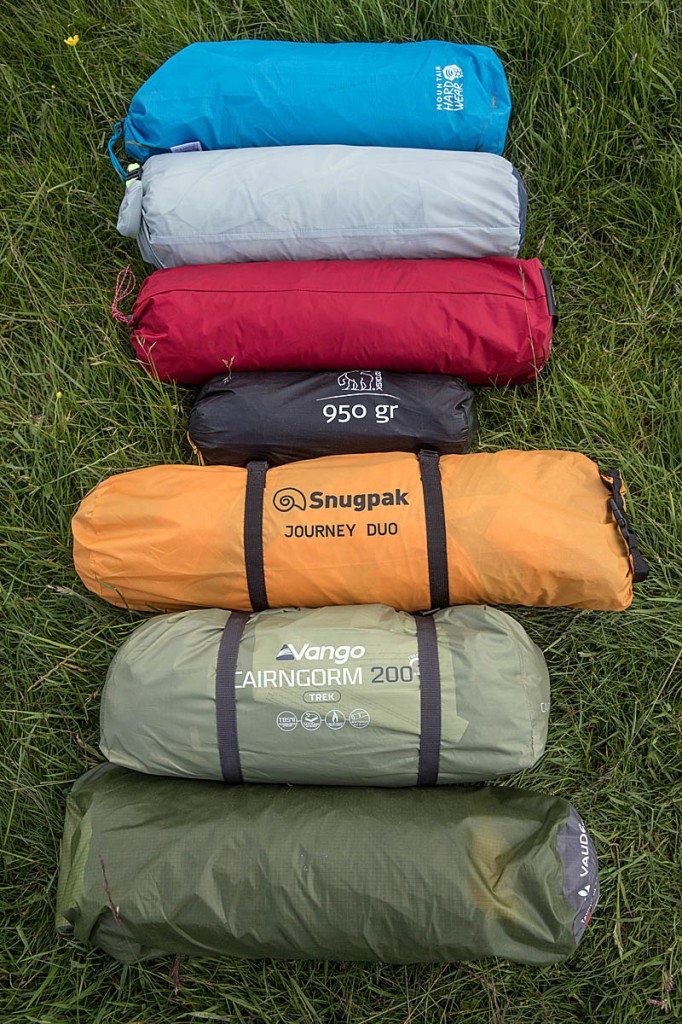
The packed tents: from top, Mountain Hardwear, Jack Wolfskin, MSR, Nordisk, Snugpak, Vango and Vaude. Photo: Bob Smith/grough
The Nordisk Telemark 2 LW topped our test results. On a three-day Lake District expedition with quite a bit of ascent, the light weight and small pack size was much appreciated. It also performed well in some fairly severe weather and, though it is snug for two people, it has some good design features.
The Jack Wolfskin Exolight II, Mountain Hardwear Aspect 2 and MSR Zoic 2 dome tents all offered the best space for two people and all performed well, with the first two just nudging ahead on overall scores. They’re particularly suitable for warmer conditions with their extensive use of mesh in the inner tent, which also cuts down condensation problems.
The Vaude Taurus UL 2P shares many of its design features with other tents from the brand’s range, and performed very well in some fairly dire weather on the mountainside.
The Snugpak Journey Two surprised us a little with its good performance and stability despite its relatively low cost. The brand has ensured nothing is left out of the package, which represents good value. It feels sturdy too.
The Vango Cairngorm 200 is a great little entry-level backpacking tent, with carefully thought-out design features, though it is snug. The brand has done well to keep weight to just over 2kg despite it coming in an oversize storage bag which makes getting a wet tent packed away much less of a trial.
- All the tents in the test were supplied to grough by the brands.
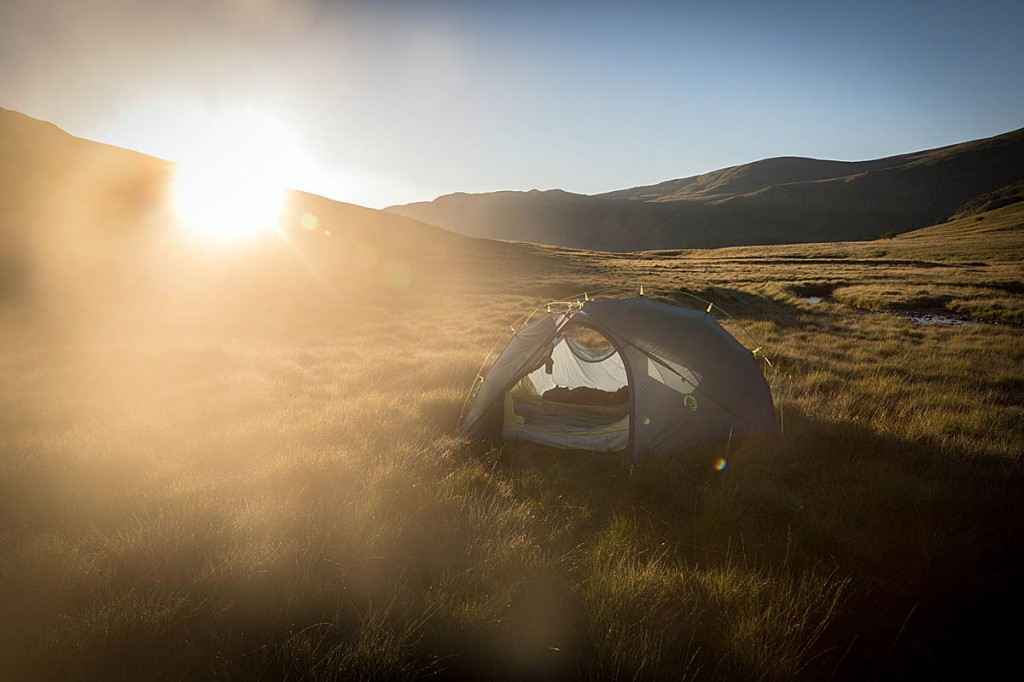
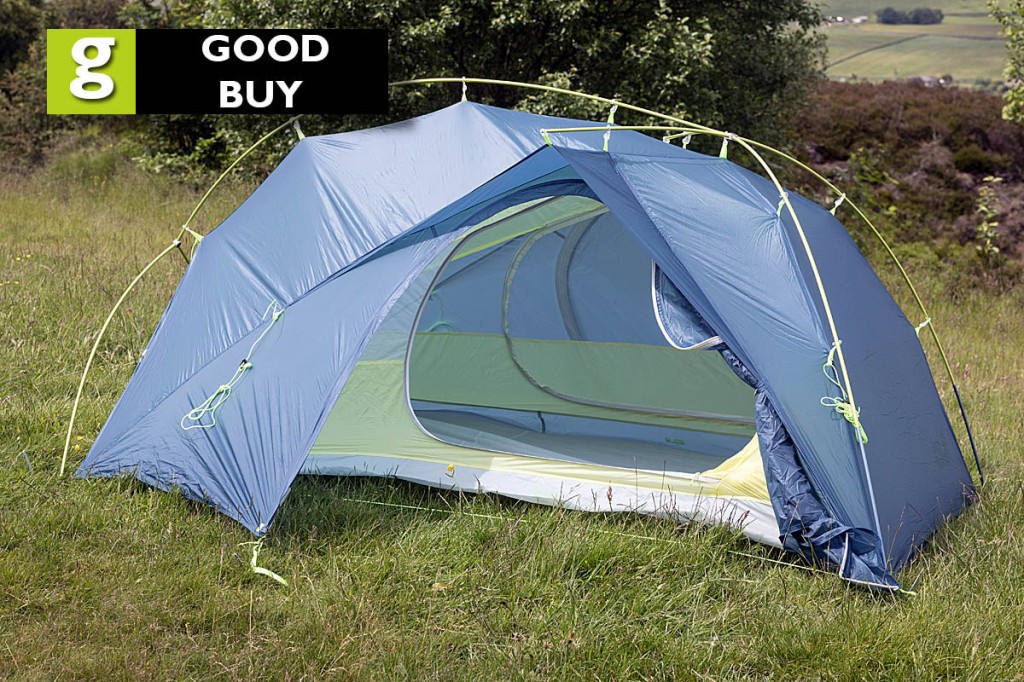
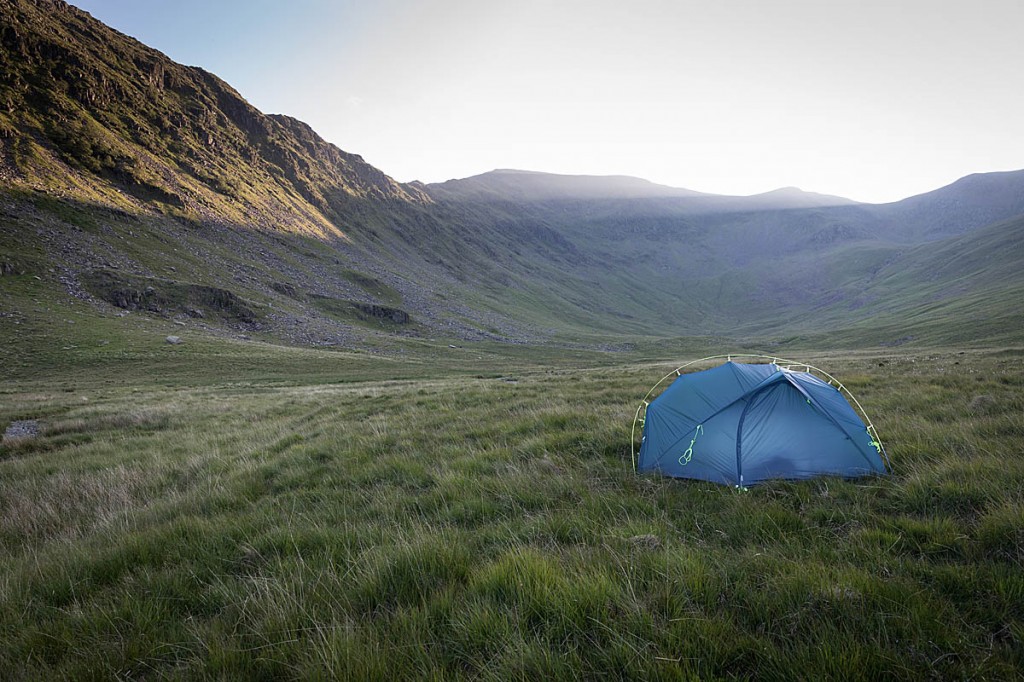
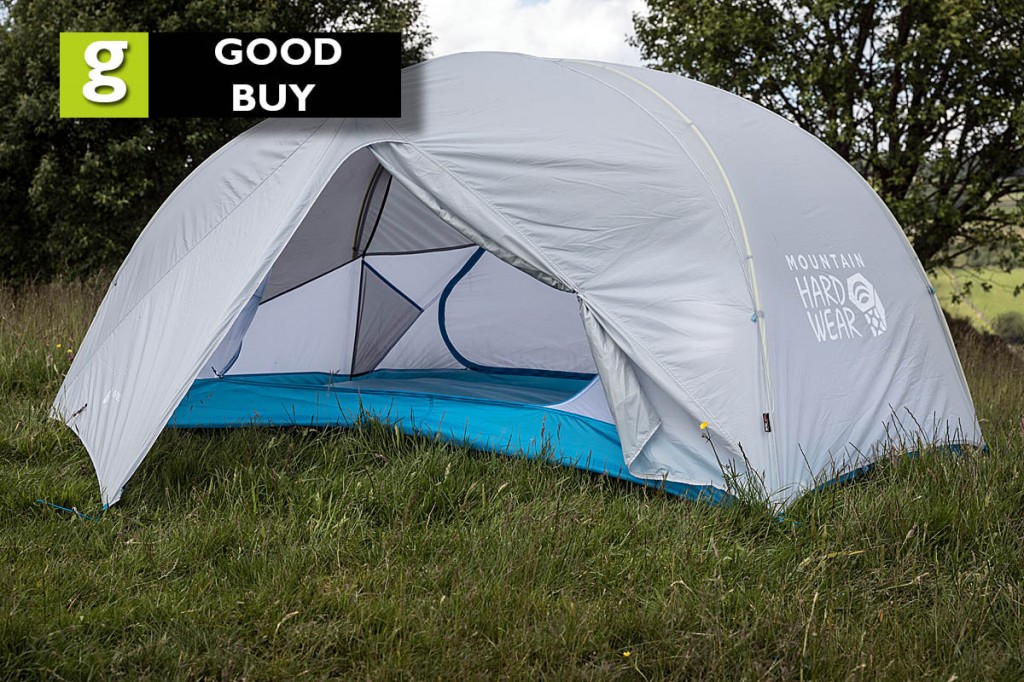
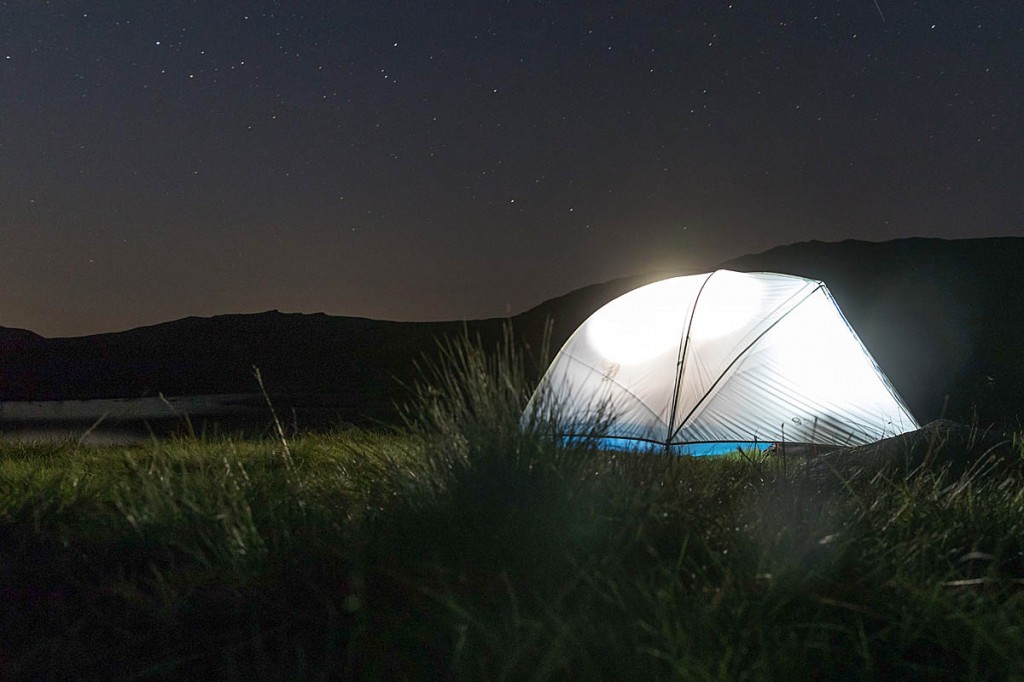
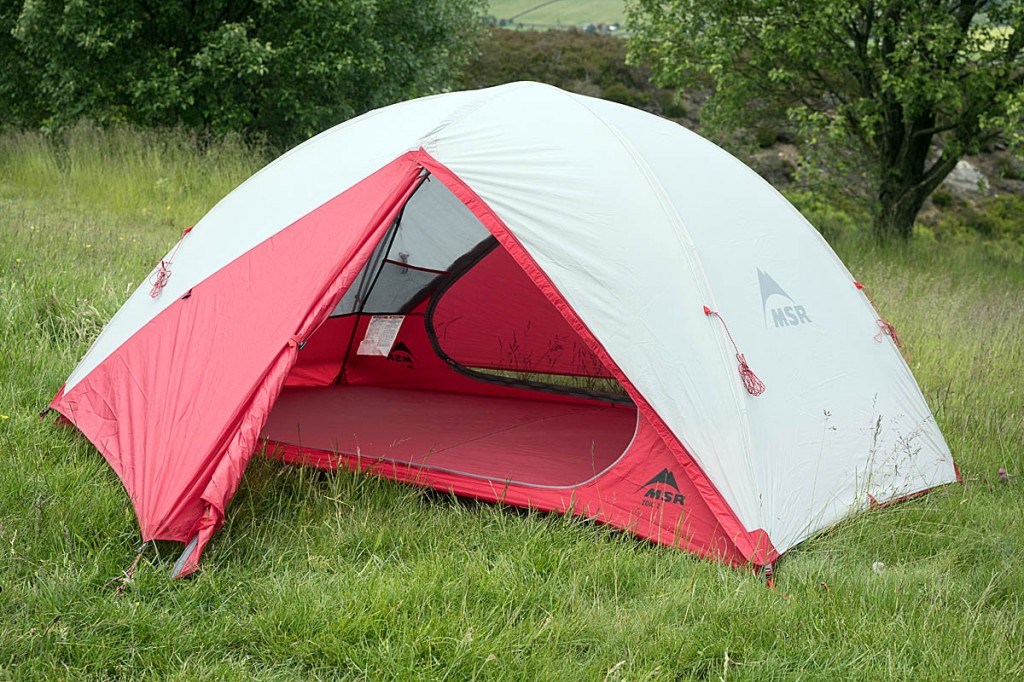
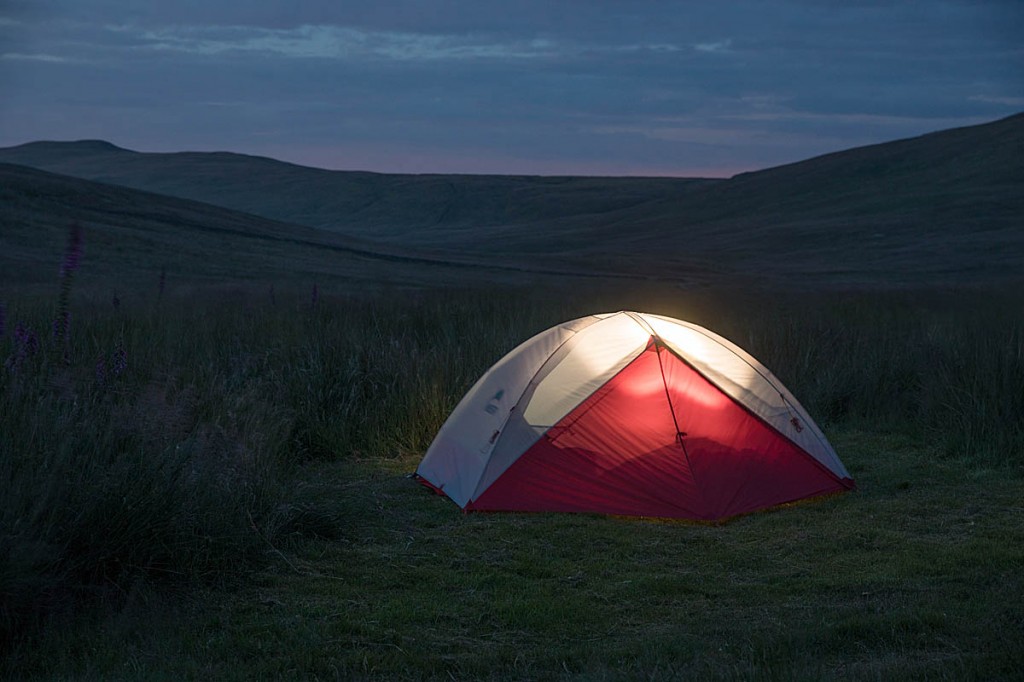
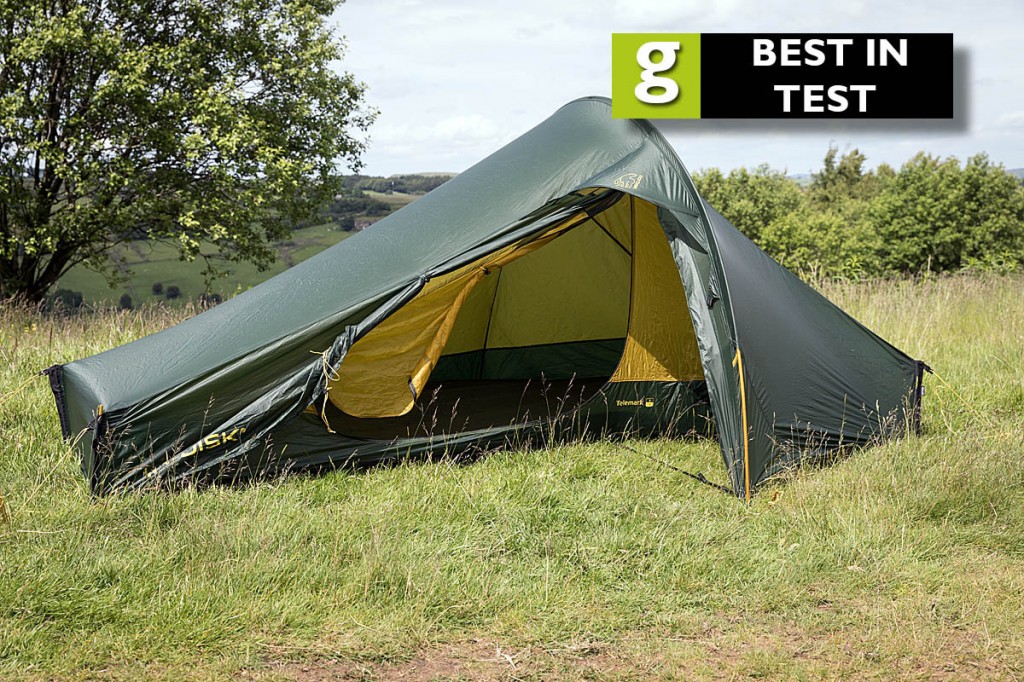
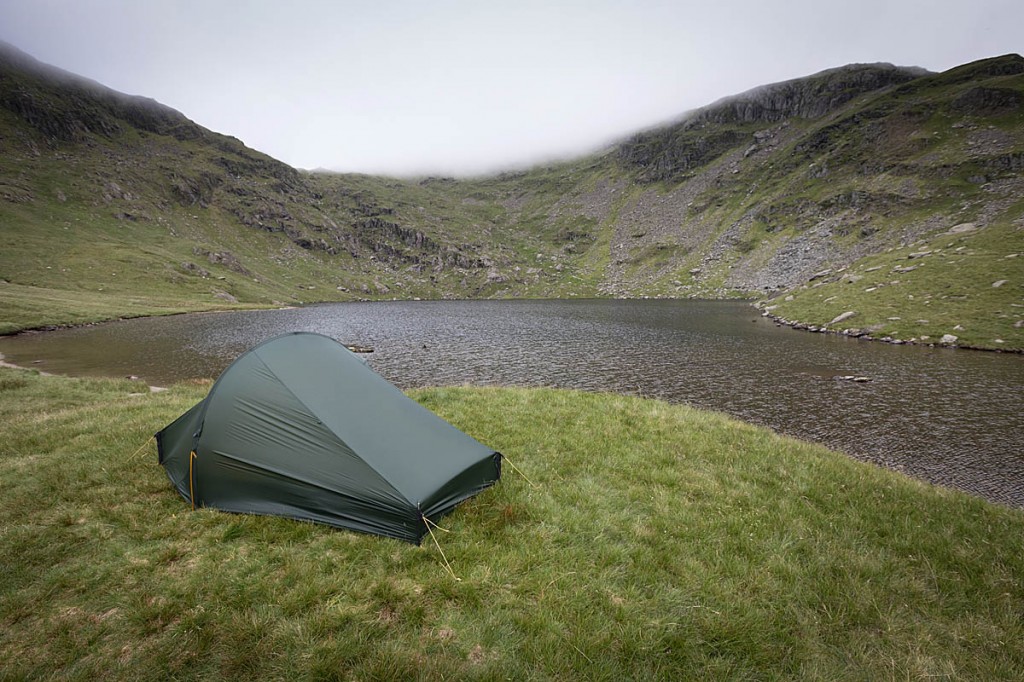
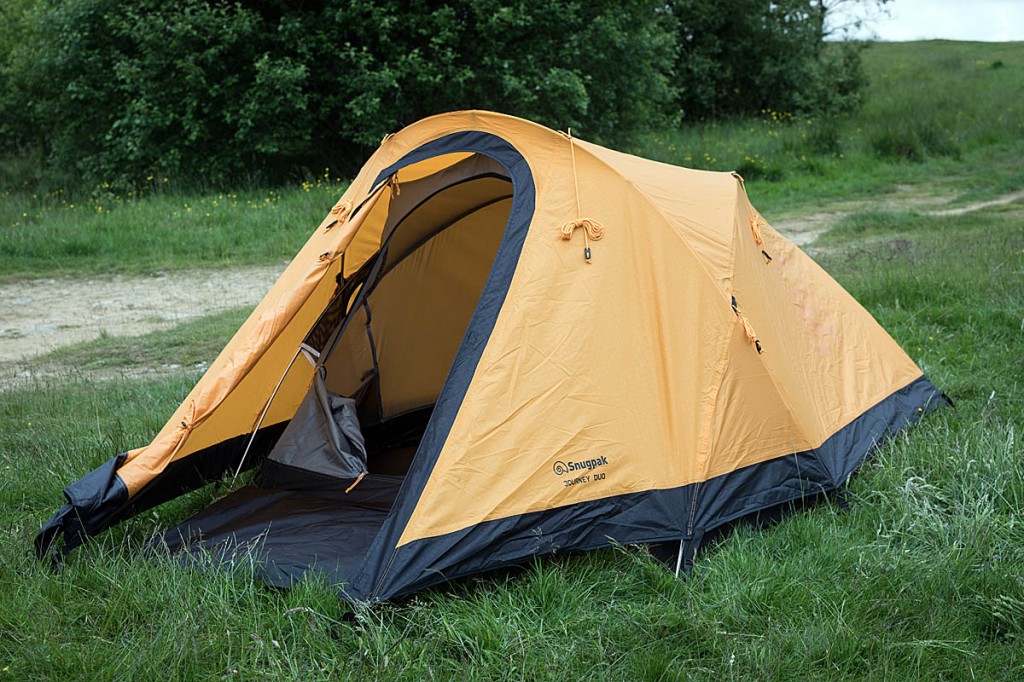
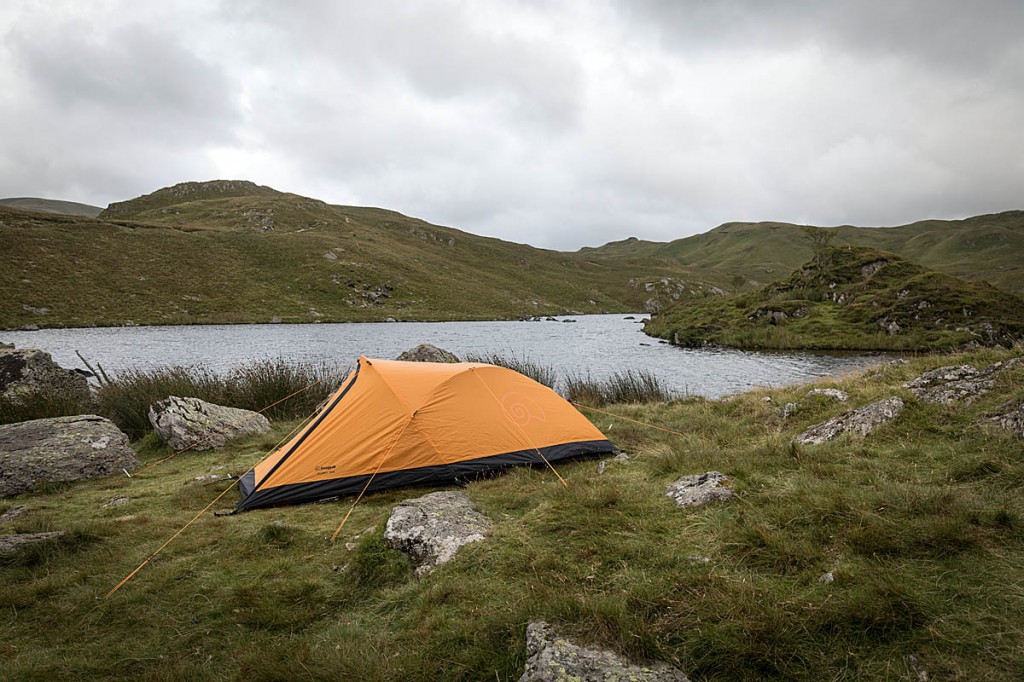
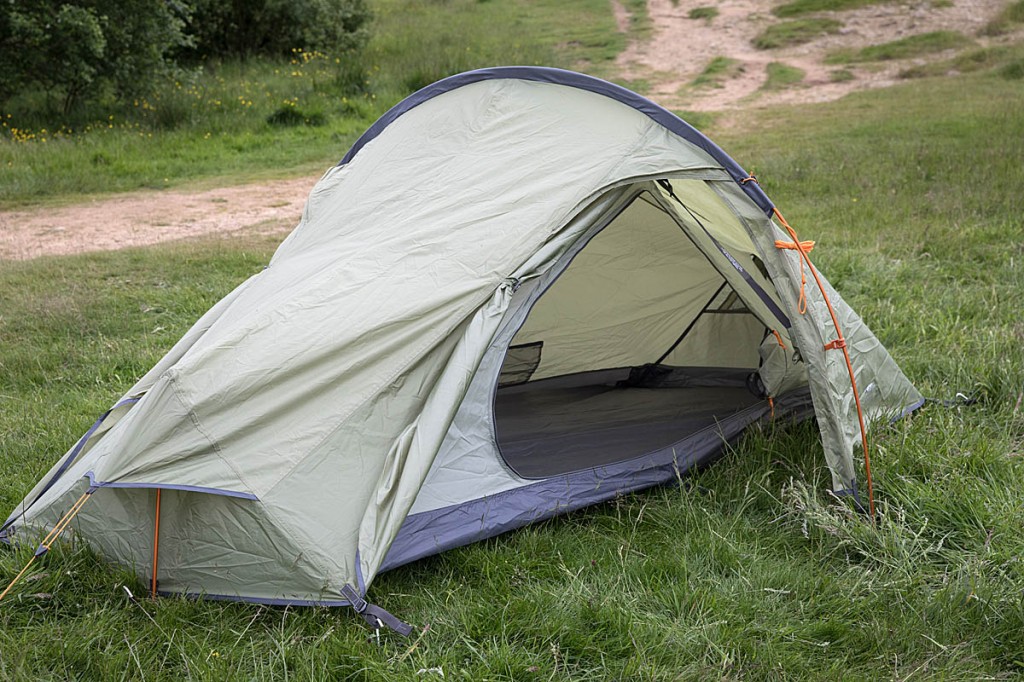
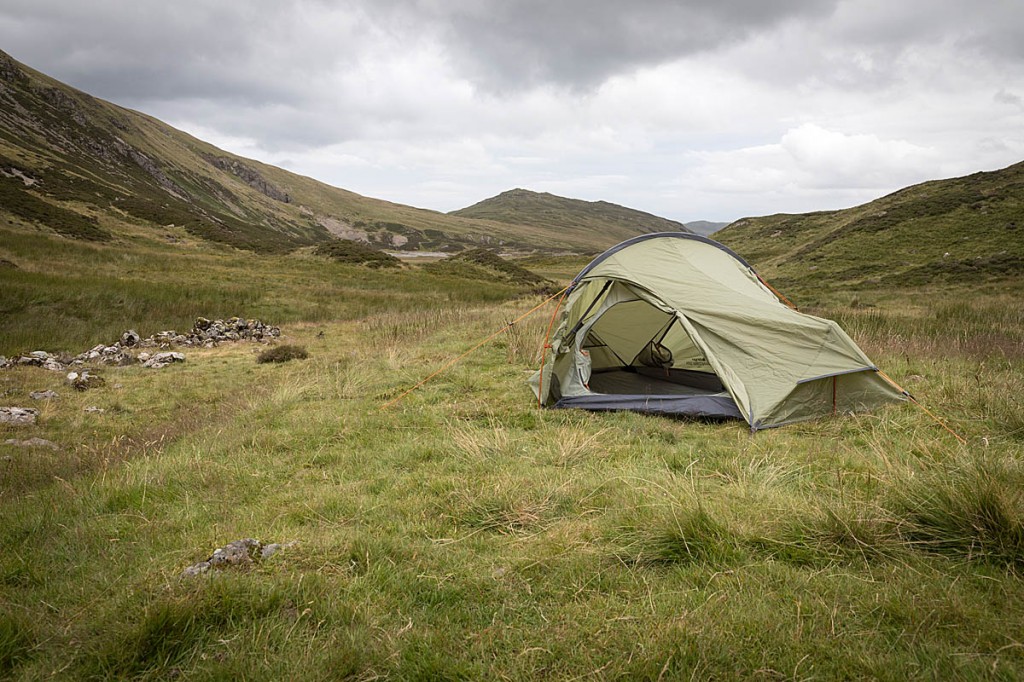
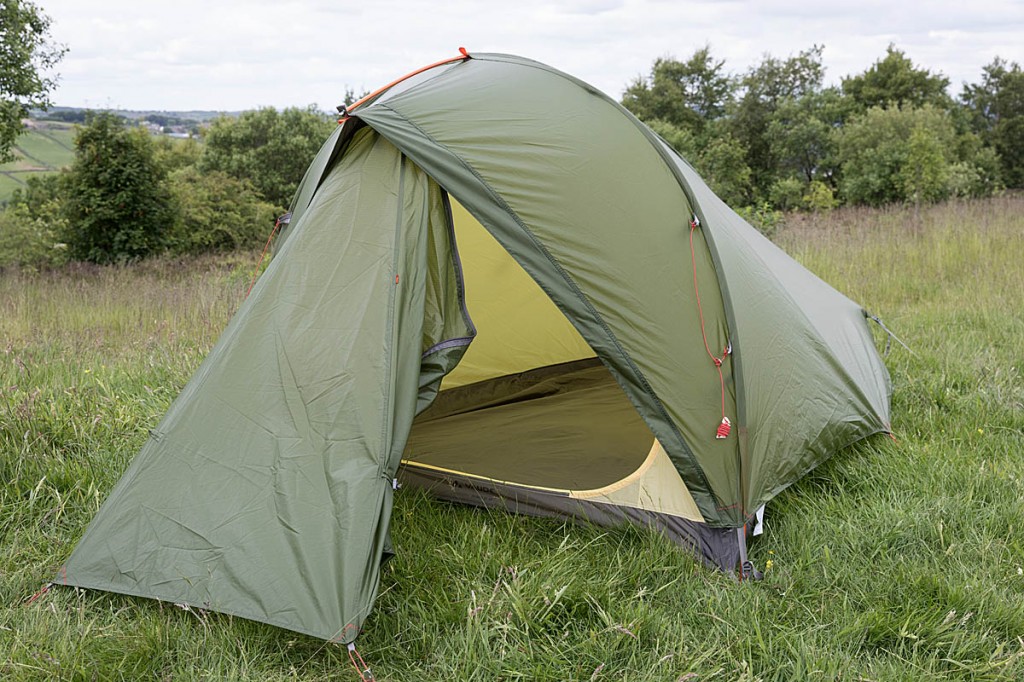
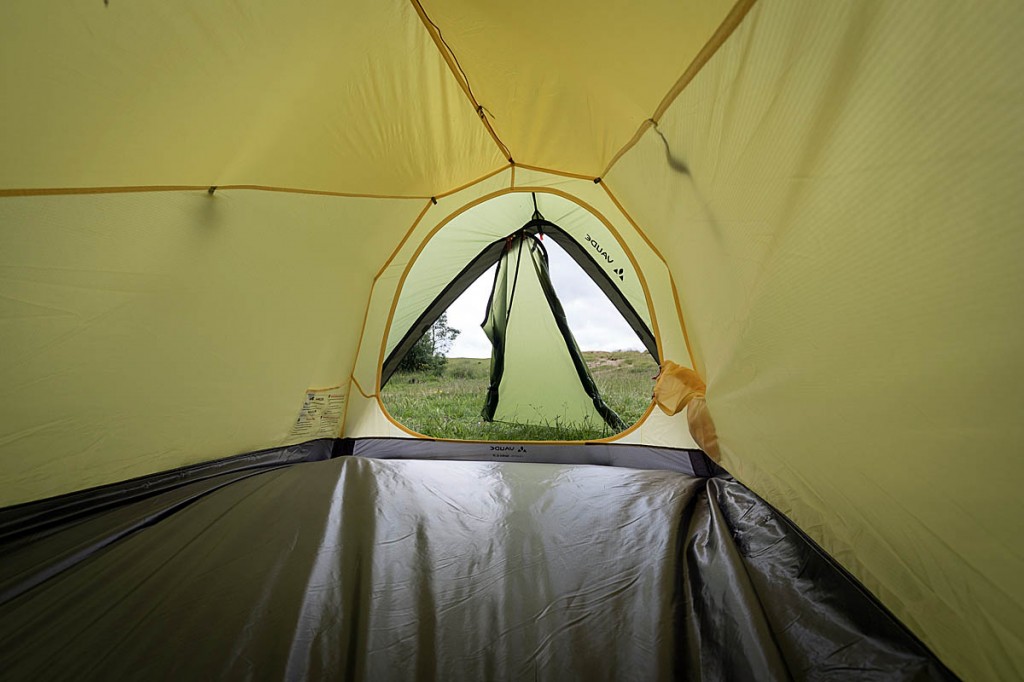
Chris Homer
26 August 2019Does anything better the Phoenix Phreeranger of 30 years ago, weight, space, knock down survival? I've still got mine!
Eddie Brennan
05 September 2019The Vaude tent is difficult to set up in wind: the pole sleeves are very tight and catch all the time and fitting the ridge pole into place is extremely difficult, a real struggle to get the door end into the hole. On several occasions this had had me swearing and cursing Vaude!